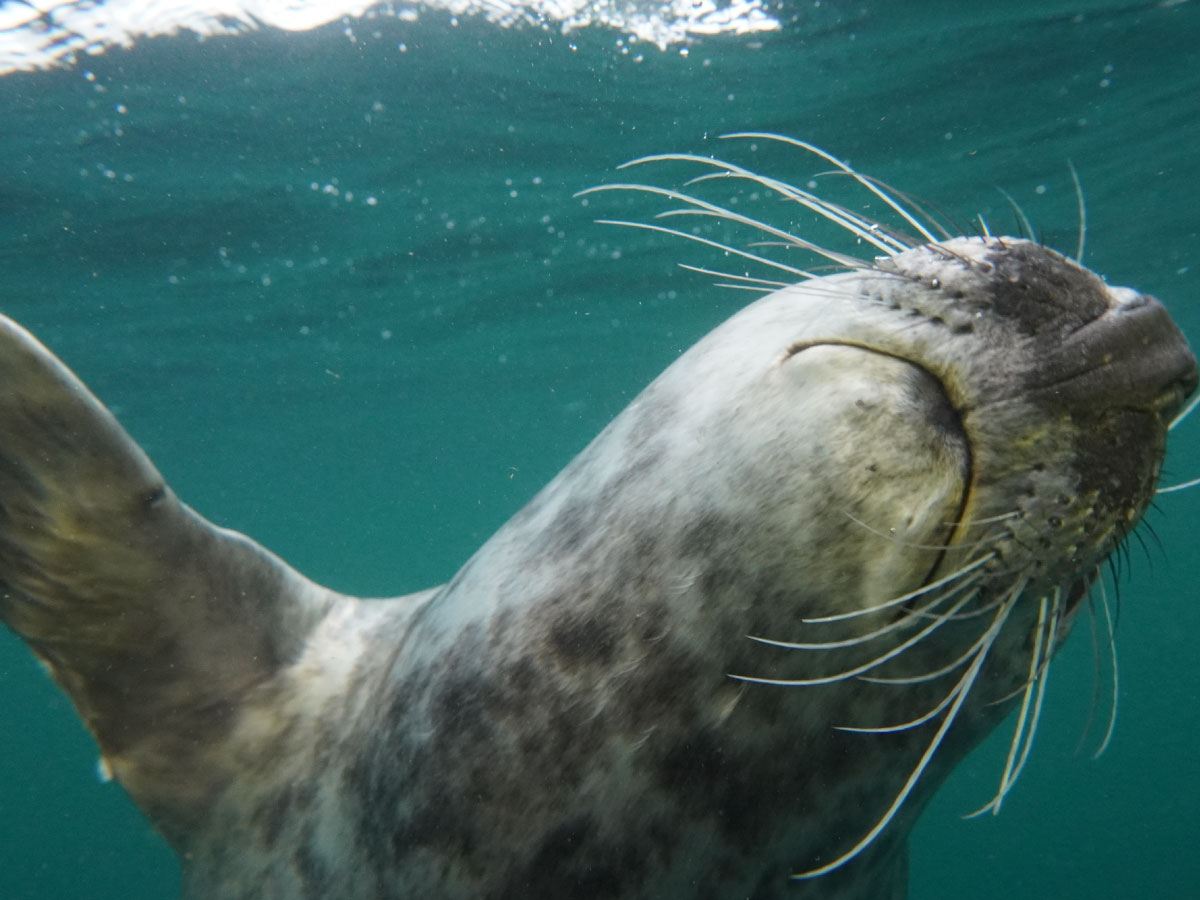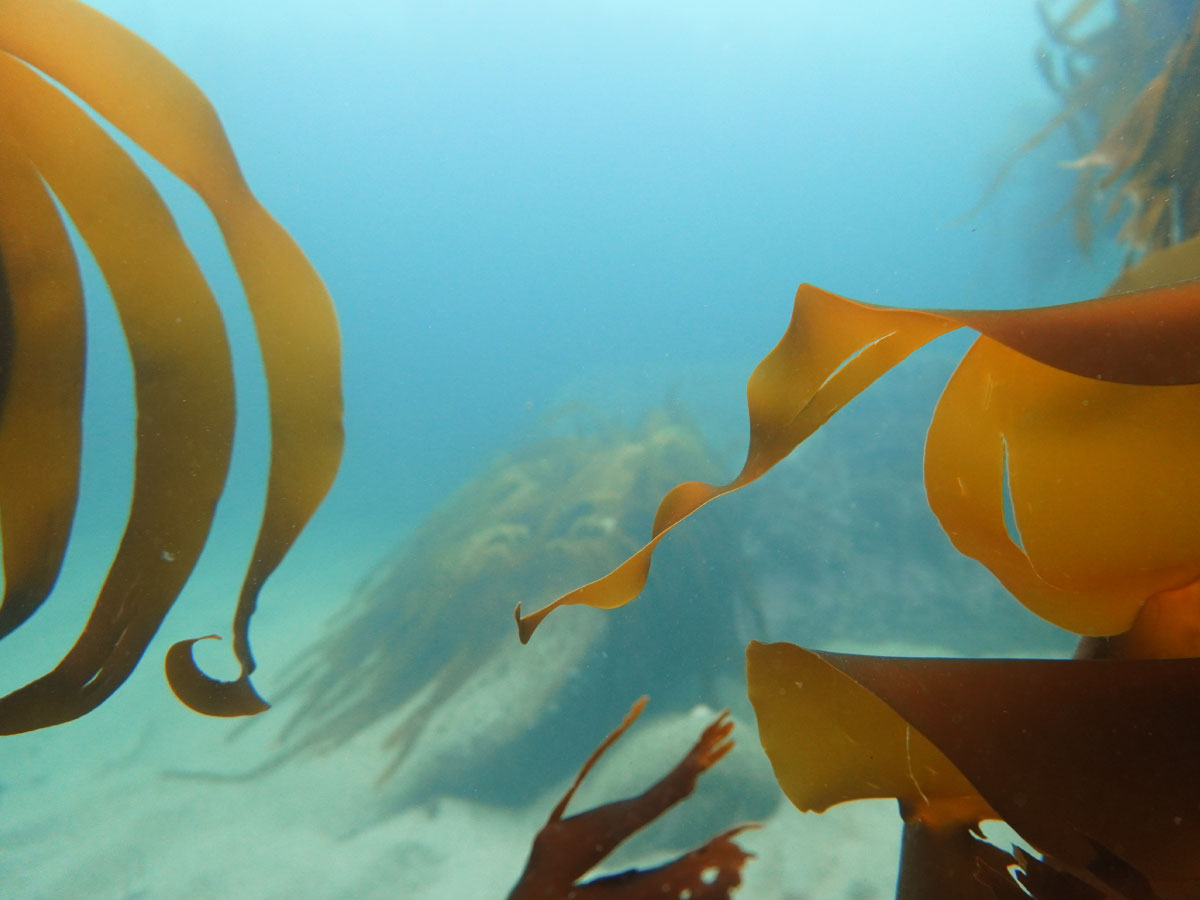DIVING AND SNORKELLING AT OUR PROTECTED SITES
OUR CODE OF CONDUCT
We are incredibly lucky to have beautiful diving and snorkelling sites in Northumberland. As you know, we are committed to protecting the ocean and love that our customers feel exactly the same way.
To help you be the best eco-divers and eco-snorkellers that you can possibly be, we wanted to share the code of conduct we use plus some rules we must follow when visiting any protected sites.
WE FOLLOW THE GREEN FINS CODE OF CONDUCT
You'll hear us talk a lot about the Green Fins Code of Conduct. You'll learn more about it in your diving and snorkelling briefings and you'll see it displayed in lots of different places around the dive centre and out at dive sites.
Our co-founders Nic and James have worked with Green Fins for a long time. They implemented these ocean-protecting rules at the dive centres they managed abroad and were very keen to bring it back home with them when they set up The Fifth Point. The code of conduct has sat at the heart of the business since the start.
![]()
If you'd like to learn more from Green Fins, they have a free e-course for divers and dive pros that highlights the importance of following the code of conduct and how it helps protect the ocean.
OUR PROTECTED SITES
We follow the Green Fins Code of Conduct whenever we're in the water, but it's worth knowing that a few of the sites we visit are in protected areas that have some extra rules.
ST ABBS & EYEMOUTH VOLUNTARY MARINE RESERVE
The St Abbs and Eyemouth Voluntary Marine Reserve was established in 1984 and aims to:
- Conserve the biodiversity of the coastal waters
- Raise awareness of the marine environment through education
- Promote responsible recreational use alongside a sustainable fishery
When you see this place underwater, you'll understand why it's been made into a marine reserve because it's absolutely stunning. There's soft coral everywhere and the reefs are teeming with life. There's everything from nudibranchs to big schools of fish, there's guillemots diving down to meet you on your safety stops, and if you're really lucky you might even spot the elusive wolfish.
As you can imagine, diving here is a real treat and we'll do everything we can to look after it.
The official Marine Reserve Code of Conduct is as follows:
- Leave animals and plants where you find them and take care not to damage them
- Do not tamper with lobster pots – it is illegal and dangerous
- Divers – control your buoyancy and do not use spearguns or hooks
- Take your litter home with you and do not pollute the sea
- Avoid losing fishing tackle by using gear suitable for the ground and an appropriate rig design
- Keep your distance from seabirds, seals and dolphins to avoid disturbing them
- Look out for your safety at all times, check the tides and keep back from the cliff edge

THE FARNE ISLANDS NATIONAL NATURE RESERVE & SPECIAL CONSERVATION AREA
There's between 15 and 28 islands (depending on the tide!) that make up one of our favourite areas to visit - The Farne Islands.
They're such a special place they have multiple designations associated with them including
- National Nature Reserve
- Site of Special Scientific Interest
- Special Protection Area (for their important seabird colonies)
- Special Area of Conservation (for the 5,000 or so grey seals that breed and rest there)
The Farnes is managed by The National Trust and although we never land on the islands during our snorkelling or diving trips, you might be interested to read their code of conduct for setting foot on the islands.
There are no specific regulations that divers and snorkelers must follow at The Farnes, but as the area is well known for getting up close and personal with the seals, we wanted to educate our divers and snorkelers on responsible interaction with these amazing pinnipeds. We created a short video course to help everyone protect the seals - it's completely free, share it with your buddies!

ST MARY'S ISLAND NATURE RESERVE
We absolutely love diving at St Mary's Island and as our closest dive site - we spend a lot of time there! The site has been a Conservation area since 1974 and a Local Nature Reserve since 1992 and is famous for seabirds and grey seals.
In support of St Mary's Island Wildlife Conservation Society, we restrict our diving in the nature reserve to West Bay. Because access to the dive sites on the far side of the lighthouse can cause a disturbance to marine life, (and it's a canny hike with all your dive gear to get there!) we only dive from the beach.
The reefs at West Bay are beautiful and it's one of the sites where we've spotted unusual critters like monk fish and cat sharks. The seals still come and say hello, but at least this way it's 100% on their terms.
